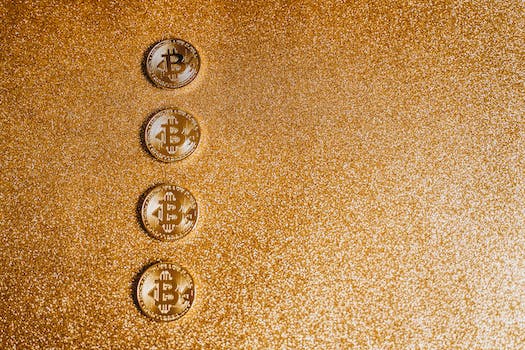If you’re having difficulties printing from your Mac or just want to switch printers, resetting the default printer settings is a good first step. If your Mac isn’t picking up the right printer, you may make printing go more smoothly by adjusting the default printer settings. With the detailed, step-by-step instructions provided here, resetting the Mac’s default printer settings is a breeze.
- 1. Introduction
- 1.1. Why would you need to reset default printer settings?
- 1.2. Understanding default printer settings on a Mac
- 1.3. How resetting default printer settings can help
- 2. Methods to Reset Default Printer Settings
- 2.1. Using System Preferences
- 2.2. Resetting through Printer & Scanners settings
- 2.3. Resetting default printer settings via Terminal
- 2.4. Using Printer Software to reset settings
- 2.5. Resetting default printer settings through a third-party app
- 3. Considerations and Troubleshooting
1. Introduction
If you’re having printing problems or just want to start over with a clean slate, resetting the default printer settings on your Mac is a good place to start. This manual will help you improve your printer settings regardless of whether you’ve recently upgraded your operating system or not. Common printing issues, such as erroneous printouts, sluggish printing, and connectivity problems, can sometimes be fixed by restoring the printer settings to their factory defaults. You can also adjust the settings for the printer to meet your individual requirements. This article will show you how to easily return your Mac’s printing preferences to their factory settings.
1.1. Why would you need to reset default printer settings?
When fixing printing problems, a Mac user should always first try resetting the printer’s default settings. You can reset your printer to factory settings if you’re having issues with print quality, connectivity, or if you just want to start fresh. By following the steps outlined in this article, you can easily restore your Mac’s factory print settings and go back to printing with no fuss.
1.2. Understanding default printer settings on a Mac
If you want to keep printing from your Mac running well, you should familiarize yourself with the system’s default printer settings. Factors including paper size, orientation, and print quality are all controlled by the printer’s default settings. Your Mac already has the preferences set up so that printing documents and pictures is quick and easy.
There are times when you may need to return your Mac’s printing preferences to their factory defaults. If you’re having trouble printing, can’t go online, or just want to start over, a fresh installation is a good option. The printer’s default settings can be restored to their factory defaults so that they can be modified to better suit your needs.
1.3. How resetting default printer settings can help
If you’re having printing problems or just want to print faster, reverting your Mac back to factory defaults is a good first step. If you’re having trouble printing, you can eliminate any lingering conflicts or misconfigurations by reverting back to the printer’s factory settings. This article will show you how to reset your Mac’s default printer settings, including detailed instructions and useful hints.
2. Methods to Reset Default Printer Settings
There are several options for reverting a Mac back to its factory-default printer settings. To that end, consider the following strategies:
The first method is to use the system preferences by going to the Apple menu in the upper left corner of the screen and clicking on the ‘System Preferences’ option.
– To access your printer or scanner, open the System Preferences window and select the ‘Printers & Scanners’ tab.
To reset a printer’s settings, right-click (or Ctrl-click) on the printer and select “Reset Printing System.”
– The “Reset” button must be clicked in order to proceed.
To use the printer software alternative, launch the appropriate application on your Mac.
– Navigate to the software’s ‘Settings’ or ‘Tools’ menu.
– Find the link to factory default your printer, and then click it.
– Finish the reset process by following the on-screen instructions.
Turn off the printer and unplug it from your Mac for the third and final manual method.
– Restart the printer after waiting a few minutes.
– The Mac printer must be reconnected.
– The printer should be recognized by your Mac immediately, and its default settings restored.
These are some of the most typical ways to return a Mac’s print preferences to their factory defaults. If you need more precise instructions for your printer model, you should look in the manual or on the manufacturer’s website.
2.1. Using System Preferences
On a Mac, you can use System Preferences to change the printer settings back to their factory defaults. Just do what I say:
Select ‘System Preferences’ from the Apple menu (found in the upper left corner of your screen) 1.
After opening the System Preferences window, go to the ‘Printers & Scanners’ tab.
The third tab displays a list of available printers on the left. Select the printer whose preferences you want to change, and then right-click (or control-click).
Then, choose “Reset printing system” from the drop-down menu that displays.
Resetting the printing system will remove all printers from the list, thus a warning message will appear before you do so. To continue, use the “Reset” button.
To re-add a printer after resetting the printing system, click the “+” button in the lower left corner of the Printers & Scanners box.
By following these instructions, you can clear out your Mac’s printing system and start with a blank slate.
2.2. Resetting through Printer & Scanners settings
Resetting in the Printing and Scanning preferences:
Here’s how to get your Mac back to its factory print settings:
Select ‘System Preferences’ from the Apple menu (found in the upper left corner of your screen) 1.
2. Navigate to the “Printers & Scanners” tab in the “System Preferences” window.
Select the printer whose settings you wish to change from the list of printers on the left.
To uninstall the chosen printer, pick it and then click the “minus” (-) icon that appears below the list of printers.
5. Select ‘Delete Printer’ to finalize the uninstallation.
To re-add the printer after deleting it, use the ‘plus’ (+) button.
Click the “Add” button after finding the desired printer in the list.
Restoring the factory settings for the printer.
The specific instructions may change significantly based on the macOS version you’re working with. If you need more information about how to operate your printer, look for a user guide online or contact the printer’s maker directly.
2.3. Resetting default printer settings via Terminal
Terminal method for resetting printer preferences
The Terminal program on a Mac can be used to restore the factory-default printer configurations. Just do what I say:
First, launch the Terminal program on your Mac.
Press the Enter key after typing the following command:
Enter “cupsctl WebInterface=yes” to enable the user interface.
This command activates the CUPS (Common Unix Printing System) web user interface.
3. Launch your internet browser and go to:
`http://localhost:631`
The CUPS user interface will launch.
After that, select the printers menu.
Find the printer whose defaults you wish to restore, then click its name. 5.
Click the ‘Maintenance’ dropdown in the printer’s settings page, number six.
Choose “Set Default Options” from the option that appears in step 7.
8 Respond “Yes” when prompted to confirm.
You can now return the printer to its factory settings in Step 9.
It’s important to exercise caution while resetting your Mac’s default printer settings in Terminal, as doing so can have unintended consequences.
2.4. Using Printer Software to reset settings
Using the printer software, it is simple to restore the default printer settings on a Mac. This process is helpful if you have to reset your printer to factory settings. To return your Mac’s printer preferences to their factory defaults, follow these steps:
First, launch your Mac’s printer application.
The second step is to go to the “Settings” or “Preferences” menu.
Find the way to return to the factory settings, then use it.
Fourth, select the “Reset” or “Restore Defaults” option.
Fifth, when prompted, confirm the operation.
Six, give the printer some time to reboot.
Your printer’s default settings will be restored after a reset.
If you are having problems with your existing printer settings or if you just want to start over with the basic configuration, resetting the default printer settings can be helpful. In order to avoid losing any unique changes you may have made, it is recommended that you create a backup of your settings before reverting to factory defaults.
The printer’s software makes it simple to return the device to factory defaults, guaranteeing peak performance and functionality.
2.5. Resetting default printer settings through a third-party app
On a Mac, you can use a third-party program to restore the factory-default printer settings. These apps are made to provide you more control over your printer’s configurations, including the option to return everything to factory defaults. Users can quickly restore their printers to factory settings by using a third-party program.
Printer Pro is a well-liked third-party program for restoring the default Mac printer settings. With this program, users can easily control and modify their printer’s preferences. Here’s how to return Printer Pro to its factory defaults:
First, launch Printer Pro on your Mac.
Step 2: Decide which printer you wish to restore to factory settings.
Third, select the “Settings” or “Preferences” tab.
Find the option to “Reset to Default” and press it.
Fifth, when prompted, confirm the operation.
The selected printer’s default settings will be restored once these instructions have been followed.
It’s worth noting that resetting your printer’s default settings with a third-party software may or may not work, depending on the app you use. When in doubt, check the app’s documentation or support materials.
In conclusion, third-party programs make it simple to restore the Mac’s factory-default printer settings. These programs make it easy to change, modify, and restore printer settings to their factory defaults.
3. Considerations and Troubleshooting
There are a few things to think about and solve before you reset your Mac’s default printer settings. The following instructions will get you printing again, whether you just want to change the default printer or are having trouble with the present settings.
First, make sure your printer is correctly connected to your Mac before attempting to reset the default printer settings. Make that the printer is powered on and that the USB or network cable is connected properly.
Go to your Mac’s ‘System Preferences’ to change the default printer settings. The Apple menu contains this choice. Find the Printers & Scanners icon after opening System Preferences.
In the ‘Printers & Scanners’ settings, you’ll find a list of connected printers from which you can choose the default. To make a different printer the default, right-click on it and select “Set default printer” from the menu that appears.
Issues with printer configuration can sometimes be resolved by uninstalling and reinstalling the printer. Click the ‘-‘ (minus) button next to the printer you want to uninstall in the ‘Printers & Scanners’ preferences. When you’re ready to re-establish the connection to the printer, select the ‘+’ (plus) button and proceed as directed.
Fifth, if the problem persists after these steps, try restarting both your Mac and printer. Verify that the printer’s default settings have been restored after restarting both devices.
The default printer settings on your Mac can be quickly and simply restored by following these tips for fixing common printing issues.
3.1. Backing up printer preferences
It is recommended that you back up your printer preferences before resetting the default printer settings on your Mac. In the event that the reset fails or you need to temporarily switch printers, having a backup will allow you to quickly and simply go back to your chosen settings.
Here’s how you can save a copy of your printer settings:
1. Navigate to the ‘System Preferences’ window.
2. Select the ‘Printers & Scanners’ or ‘Print & Scan’ tab.
Third, choose the printer for which you wish to create a backup.
Then, select “Export Preferences” from the printer’s context menu.
Fifth, decide where to save the exported file, and then do so.
You can save your printer configurations and preferences to a file for safekeeping by following these instructions. This file can be used to quickly and easily restore the settings, making for a smooth experience in the future.
If you are having problems with your printer after resetting everything to factory defaults, you can try reverting back to your previous settings from the backup file. It’s possible that this will fix the issue and restore your previous preferences.
Regular backups of your printer settings are recommended, especially if you make frequent adjustments or use more than one printer in your workflow. In this approach, resetting to your previous settings is quick and painless.
3.2. Reinstalling printer drivers
There are a few things to keep in mind and troubleshooting actions to take while reinstalling printer drivers. To avoid any problems, it’s crucial that you adhere to these rules.
First, get rid of the old drivers; doing so is a good idea before installing new printer drivers. You can uninstall a printer from your Mac by heading to the ‘Printers & Scanners’ section of System Preferences and clicking on it. Follow this by pressing the ‘-‘ button to remove it.
Visit the printer manufacturer’s website and grab the most recent drivers for your printer model there. If you’re using a Mac, you need to make sure you get the right version.
Once the previous drivers have been deleted and the current drivers have been downloaded, detach the printer from your Mac and then reconnect it. After a brief pause, plug it back into your computer.
To update your drivers, simply double-click the file you downloaded and follow the on-screen instructions. During setup, you may be prompted to approve a licensing agreement or similar document.
5. Put the printer through its paces by checking its presence in the ‘Printers & Scanners’ section of System Preferences when the installation is complete. Make it your default printer and print a test page to ensure proper operation.
Solution: Restart both the Mac and the printer if reinstalling the drivers does not solve the problem.
Check that the printer’s connections are firmly hooked into your Mac and that the printer itself is attached to the correct port.
– If your printer supports it, make sure the latest firmware is installed.
Please consult the printer manufacturer’s documentation or contact customer support if you experience any problems installing the driver.
You should be able to successfully reinstall printer drivers on your Mac if you follow these guidelines and troubleshooting methods.
3.3. Common issues when resetting default printer settings
There are a few issues that are frequent when resetting the Mac’s default printer settings. If you want the reset process to go off without a hitch, you should think about and fix these problems.
Common problems include the printer still not being recognized after resetting everything to factory settings. This may occur if the printer drivers were not installed correctly or if the printer was not connected properly. If this happens, try reinstalling the printer drivers and double-checking the connection.
The printer’s settings might not be stored or applied after the reset, for example. Incompatibilities with other applications or system preferences on the Mac can cause this. Check for any potentially incompatible applications or settings and disable or uninstall them to begin troubleshooting.
In addition, after reverting to factory defaults, users may encounter printer failures or poor print quality. Possible causes include using an unsuitable printer driver or an out of date operating system. Verify that the printer drivers are up-to-date and suitable for use with Mac OS X. Printing problems can often be fixed by adjusting the print parameters to achieve the desired print quality.
Finally, it is critical to be aware of these typical issues and to troubleshoot them effectively when resetting default printer settings on a Mac. By keeping these things in mind and fixing any problems that may arise, customers can easily restore their printer’s factory settings.
3.4. Seeking professional assistance
It may be a good idea to get some outside help when you need to reset the printer settings on your Mac. However, there are a few things to think about and troubleshooting methods to take before calling for assistance.
First, make sure that your Mac has a solid network connection to the printer. If the printer isn’t working, it’s a good idea to see if there are any network or connectivity issues.
Second, ensure you have the most recent printer drivers installed. Incompatible or outdated drivers might be the root of many printing woes. Check for driver updates by going to the manufacturer’s website or by using your Mac’s built-in software update capability.
Also, make sure the printer is designated as the default output device. Select the desired printer as the default in the Mac’s ‘Printers & Scanners’ preferences.
If the aforementioned measures don’t work, you may need to undertake more troubleshooting or get expert help. If you’re having trouble with your printer, calling the printer manufacturer’s support line or talking to a Mac expert will help you get individualized advice.
If you are not confident in your ability to troubleshoot technological issues, it may be in your best interest to seek professional assistance. If you follow the aforementioned precautions and troubleshooting processes, you may be able to fix the issue on your own before seeking professional assistance.
3.5. Preventive measures to avoid frequent reset
Several precautions can be taken to reduce the frequency with which a Mac’s default printer settings need to be adjusted. To avoid having to continuously reset your printer, evaluate these factors and follow these troubleshooting actions.
First, make sure your printer drivers are always up-to-date by installing any available updates. Inconsistencies brought on by outdated drivers often need reverting to factory defaults. Always see whether there are newer versions on the maker’s website.
Make sure the software you’re using is suitable for your printer and your Mac’s operating system. Problems with compatibility and frequent resets can result from using incompatible applications.
Third, prevent sudden power disruptions, as this might cause printer settings to be lost. Put your printer behind a surge protector and plug it into a steady power source to avoid this.
Make sure that your Mac and printer are correctly connected by double-checking all cords and connections. Errors in communication might be caused by loose or faulty connections and require a reset.
If you find that print jobs are getting stuck or producing errors, you can solve the problem by clearing the print queues on your Mac. A stalled print job may necessitate resetting the default settings.
These preventative actions will allow you to print from your Mac without experiencing as many resets.
Conclusion
Overall, it doesn’t take much effort to return your Mac’s printer settings to their factory defaults. If you’re having trouble printing, try resetting your printer to factory defaults by following the instructions in this article.





